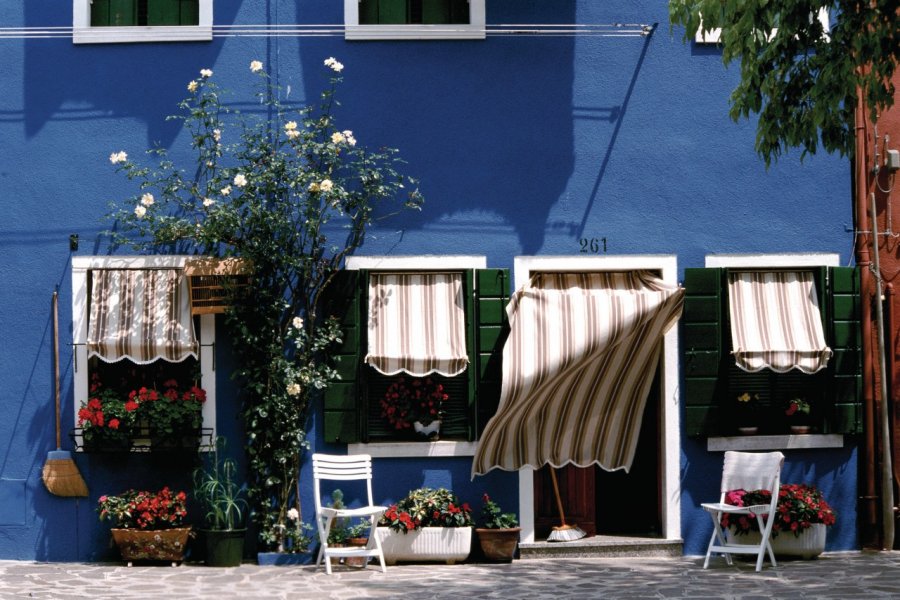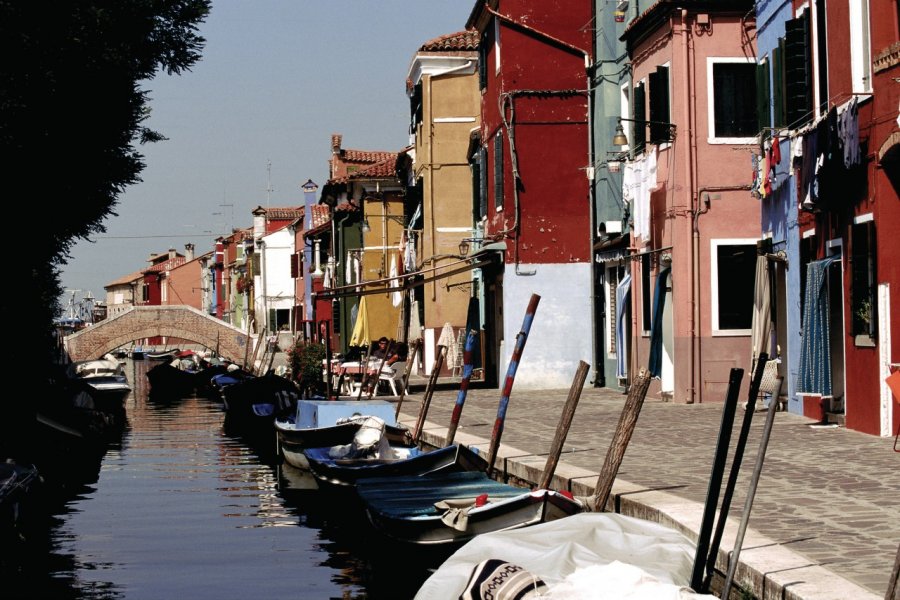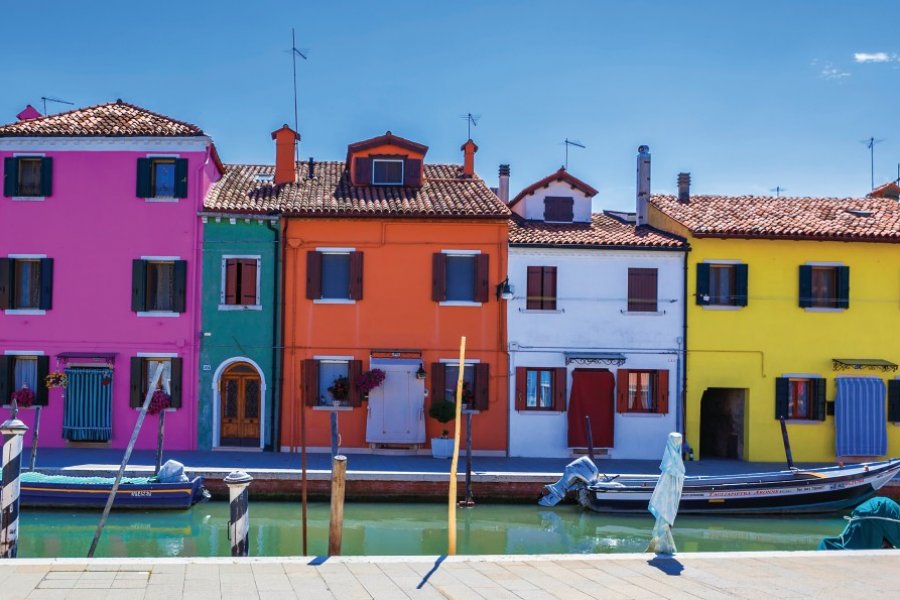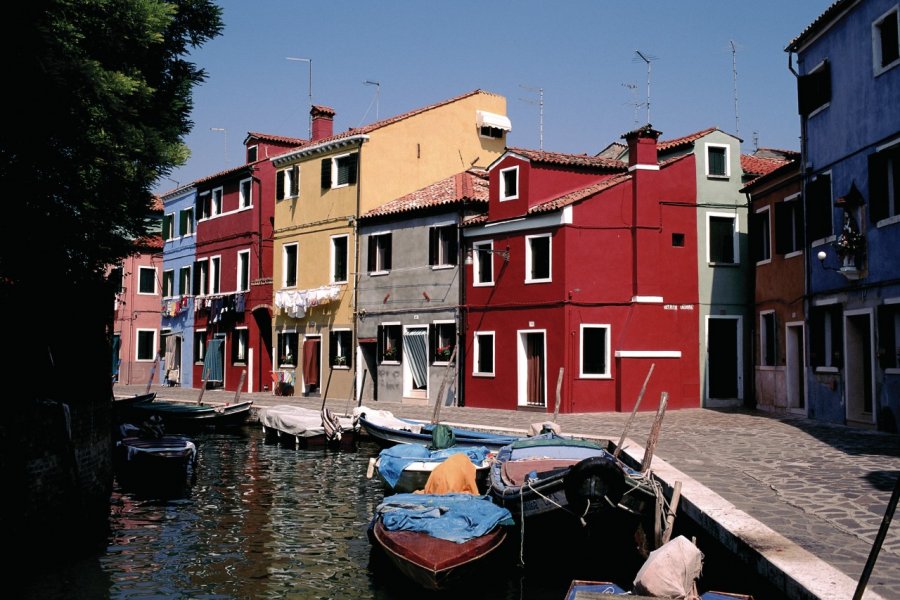Travel Guide Burano
Find an accommodation
Advertising
Full of charm, the small island of Burano is much cuter and more colorful than its larger neighbor Murano. Located less than ten km from Venice, this island of fewer than 4,000 inhabitants owes its origins, like Murano and Torcello, to the people who once fled the Terra ferma. Burano, or Bureana, also takes its name from one of Altino's gateways. In the 6th century, it was just a vicus, a district of Torcello. Today, Burano is an island in its own right, with its own distinctive features: brightly-colored houses (sky blue, red, light green...), pastry shops (busolai, zaeti, S-shaped cakes) and the astonishing silhouette of its campanile, that of the church of San Martino, leaning some 1.80 m! Burano was one of the few islands in the lagoon to escape the decline of its neighbor, Venice. Thanks to its configuration, it was also able to avoid becoming a marsh, like Torcello. Although a large proportion of Burano's inhabitants work in Venice or in the glass factories of Murano, the island still has its own fishing industry, but above all lacemaking and embroidery. This tradition, which dates back to the 15th century, made Burano famous the world over. According to legend, a fisherman who resisted the sirens' song was given a crown made from the foam of the sea waves. He offered it to his wife, and the jealous women of the island tried to match the mermaids' handiwork by working it into the finest lace. Thus was born the famous Burano stitch, punto in aria (literally "stitch in the air"). In decline, the art of lacemaking was given a new lease of life at the end of the 19th century, thanks to the tenacity of one of the island's last lacemakers, Cencia Scarpariola. However, the island's most famous Buranello (as a Burano resident is known) was not this courageous woman, but Baldassarre Galuppi (1703-1785), a Baroque musician with an extravagant personality, to whom the main square is dedicated. Burano is also interesting for its religious buildings. Unfortunately, during the Napoleonic period, many of these churches were abandoned, including Santa Maria delle Grazie, known as the Capuchin Church, and the churches of San Moro and San Vito. The only remaining church is San Martino Vescovo, with its interesting frescoes by Tiepolo.
What to visit Burano?
Advertising
Weather at the moment
Advertising
Organize your trip with our partners Burano
Transportation
Book your plane tickets
Car Rental
Boat rental
Accommodation & stays
Find a hotel
Holiday rental
Find your campsite
Tailor-made trip
Immersion travel
Services / On site
Activities & visits
Find a doctor
Burano travel inspiration
Find unique Stay Offers with our Partners
Pictures and images Burano
Other destinations nearby Burano
5 km away
25 km away

























